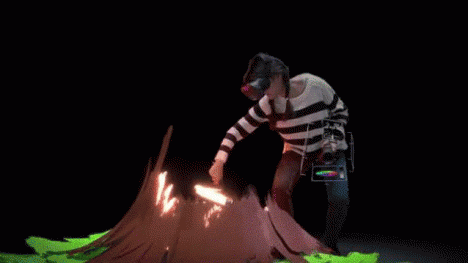Participatory design is becoming an increasingly popular practice in different design disciplines. In his study of participatory practices, Phalen argues that for a successful participation, designers should use strategies to present the problem in a way that makes sense to participants. Participation also requires engaging participants in design activity and making them feel at ease to express their opinion. Even if we have a highly-engaged group of participants that understands the problem very well there is still a major gap that needs to be addressed. Designers work with images, models, and words. People can sort design options, make comments about proposals and share their experiences. However, without making tools they cannot truly participate in the act of designing. How is it possible for ordinary people to acquire the language and tools used by designers without going through the time-consuming design education? We need tools that do not confuse users through their sophisticated interface and at the same time they have potentials for constructing ideas. We can apply the same principles discussed by Phalen to these objects: participatory design tools should engaging and understandable.
Recently, I went to a talk by Jennifer Magnolfi who shared on of her participatory design projects in Las Vegas, NV. The project aimed to introduce coworking spaces to Downtown Las Vegas in order to attract startups and tech companies. Magnolfi and the joint architecture firm who worked on this project asked members of the community to participate in the project. They engaged community members in recognizing potential interest points, conceptualizing coworking spaces. In these sessions, organizers gave simple model making tools (e.g. Lego bricks, papers) and visualization tools (e.g. maps, markers, dot points) to participants in order to envision their ideas and share them with others. Also, many of these participants were business owners around the community who agreed to run a week-long experimental transformation project by adding shade umbrellas and flowers boxes to their store front. Project gradually grow out of this small experiments and turned into a proposal that was not only focused on designing coworking spaces in Downtown area but a vision on how the city can transform its identity from a tourist destination to a tech hub.
 |
| Tiltbrush Technology by HTC VIVE |
While this project is purposefully focused on low-tech tools for participation, I think with the advancement of modeling software as well as virtual reality and augmented reality technologies, we will have intuitive hi-tech design tools that will make co-design more engaging and constructive. For instance, VIVE introduced its sculpting tool last year that turns 3-dimensional sketching into a very simple activity. Such technologies can bridge the gap between designers and ordinary people and create more meaningful participatory design activities. These are the tools that more intuitive to learn and more engaging to encourage creativity and participation.
Reference
- Phalen, Kimberly Bosworth. "Evidence-based Approaches to Public Participation in Design Decisions."
- https://www.tedxbarcelona.com/wp-content/uploads/2016/09/Tiltbrush-468x263.gif










